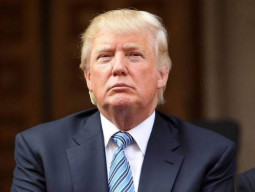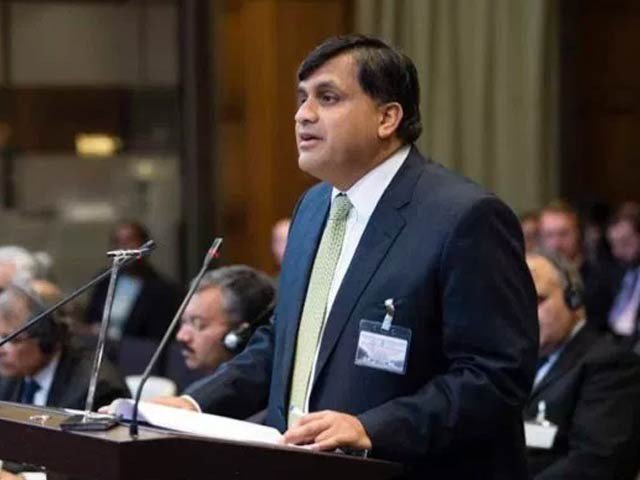
If we look back at how WWII ended in the Pacific theater, we will recall the occupation of South Korea and North Korea by the US and Russia respectively, immediately after Japan’s destruction of the cities of Hiroshima and Nagasaki. At that time, the US and USSR’s policy in dividing the country between them at the 38th parallel seemed to be a consensus on letting Russia have its long time wish of touching the warmer waters to its east, and the US of having a permanent presence in this end of the Pacific — an effect that would be maintained only in a divided Korea. The North to be enveloped in socialist attire and the South in a capitalist one, severed to alienate the two people, who were actually one, to the extent that both would remain mutually threatened by each other to this day. This should not be a surprise, as history shows us that the moment one state entity is divided into two, it becomes impossible for any of the two to overcome their self-interests, many of which need to be sacrificed in a reunification.
But contrary to this effect, as the decades have passed, we see the North and the South endeavouring to come closer to end the era of hostility between them. Several regional and global factors may have played their role in shaping the mindsets in the two Koreas to this end. We will start with an analysis of their internal economic evolution.
The story of NK’s economic evolution can be condensed into the pre-1990 period when the country had a staggering 39% industrial growth rate, and the post-1990 period when the US started sanctioning the country, truncating it from the global economic platform, coupled with the 1996 floods and famine that killed 3 million North Koreans further bringing economic activity to a standstill.
The reverse of this is true for SK whose economy was stagnant under US-instated Syngman Rhee’s authoritarian rule in the first decade. Only after Rhee’s ousting and later its complete alignment with US foreign policy in dispatching its troop to the Vietnam War theatre, for which it received reimbursements of an estimate of $235,560,000 at that time, did SK tread the path of industrialisation, becoming one of the fastest growing economies.
It may be noted here that SK and Japan, both being close allies of the US in the eastern Pacific, were comfortably placed for economic cooperation. That is why, after diplomatic normalisation in 1965, and Japan’s promise of financial aid in the name of compensation for Japanese colonial rule over Korea, SK became the backyard for intermediate industries that would meet the high-end industrial need of Japan. After the 1997 currency crisis, however, SK opened itself to the free market, allowing several global enterprises to move into the country, making it less dependent on Japan.
This further changed with Japan’s economic-bubble-burst in the 1990s and China’s rise as a global economic power in the 2000s — events which gradually siphoned SK’s trade flow towards China. Increased relations with the socialist powerhouse have had the natural effect of softening SK towards China’s interests, especially towards China-friendly NK. China’s obvious immediate interest would have been the diffusion of hostilities between its two first door neighbours, as superpower dynamics go against a power that is war-prone in its immediate neighborhood. This explains the Inter-Korean summits between the leaders of North and South Koreas since 2000.
In the September 2018 Summit, the two sides agreed to completely cease all hostile acts against each other to devise substantive military measures to transform the Demilitarised Zone into a peace zone and vowed on cooperation and military confidence building. This was followed by an agreement that sought the transfer of wartime operational control (OPCON) of the US-ROK combined defence mechanisms from US to South Korean leadership; and the suspension of the massive US-ROK joint Vigilant Ace air drill that had been a deterrent against NK. Later President Moon Jae-in was found creating a soft corner for NK in his Europe tour, for which he has been affronted by critics in the US.
On the other hand, Trump’s summits with Kim Jong-un show a tug of war wherein both sides have insisted on their own methodology for achieving a peace deal. On one side, the US has insisted on complete denuclearisation. Mike Pompeo has asserted that 60% of NK’s nuclear warheads and fissile material need to be shifted out of the country before having a peace deal. On Kim’s side the demand has been for an ‘end-of-war declaration’ before the denuclearisation process begins — and the juggling seems to be going on with no hope of results.
The truth seems to be that the US is in a very difficult situation as it feels its long-trusted allies are drifting away from them and into the China whirl. With an SK drawn towards peace with its parted half, perhaps sensing China as a better provider of security than a US who’s Trans-Pacific Partnership has been rejected by the eastern Pacific nations; with a Japan that is eying markets all the way to Asia and Europe in sharing China’s Belt and Road; and with an NK as adamant as ever — the US is becoming jittery. They have the choice: either a unilateral enmity against NK in China’s backyard; or a quiet embrace of the Red-Tide in this long-hanging issue, as was symbolised by Trump’s ‘stepping across that line’ in Truce Village inside the border zone on 30th June that the US and the erstwhile USSR had drawn in 1945.
Published in The Express Tribune, August 10th, 2019.
Like Opinion & Editorial on Facebook, follow @ETOpEd on Twitter to receive all updates on all our daily pieces.






























1714024018-0/ModiLara-(1)1714024018-0-270x192.webp)









COMMENTS
Comments are moderated and generally will be posted if they are on-topic and not abusive.
For more information, please see our Comments FAQ